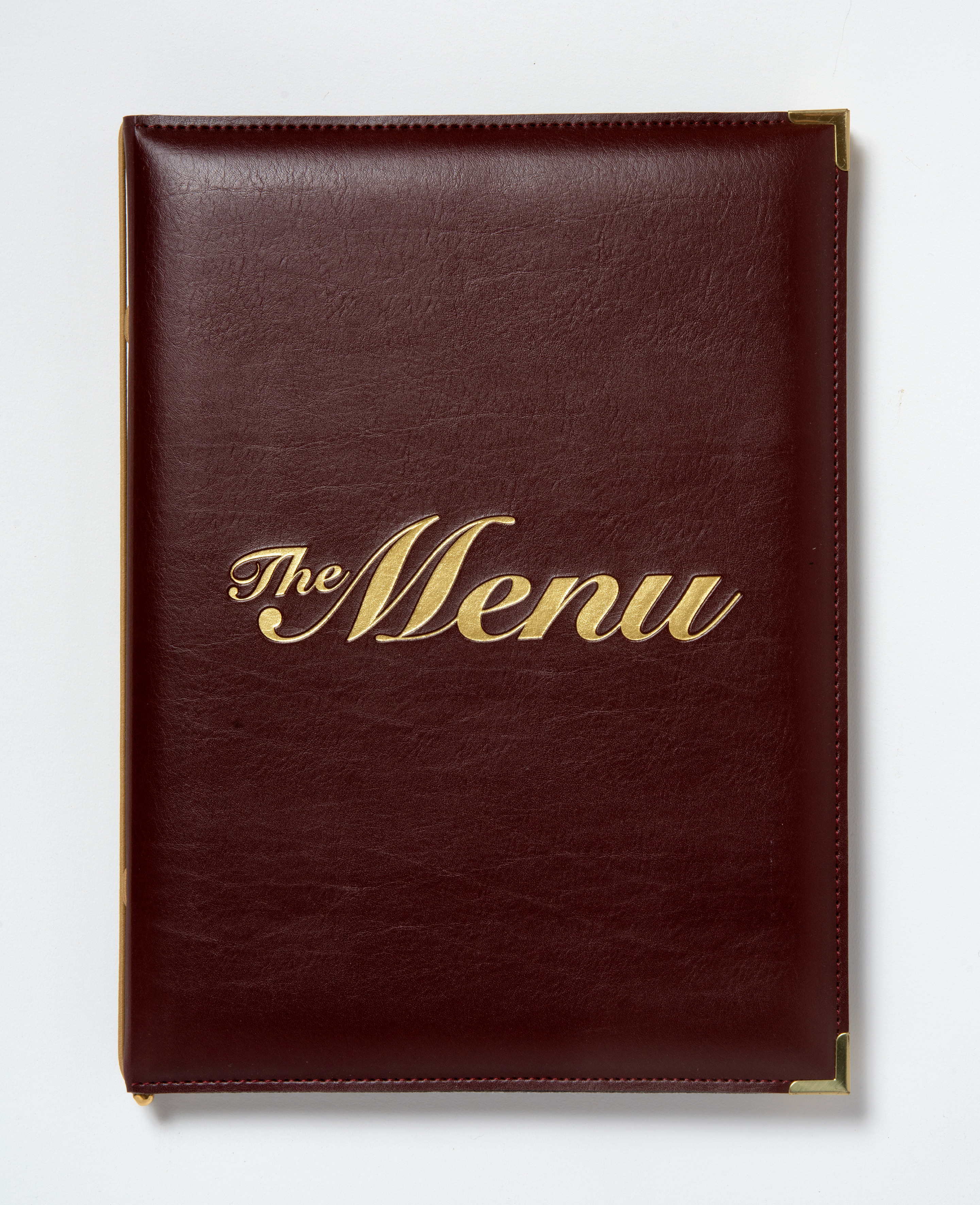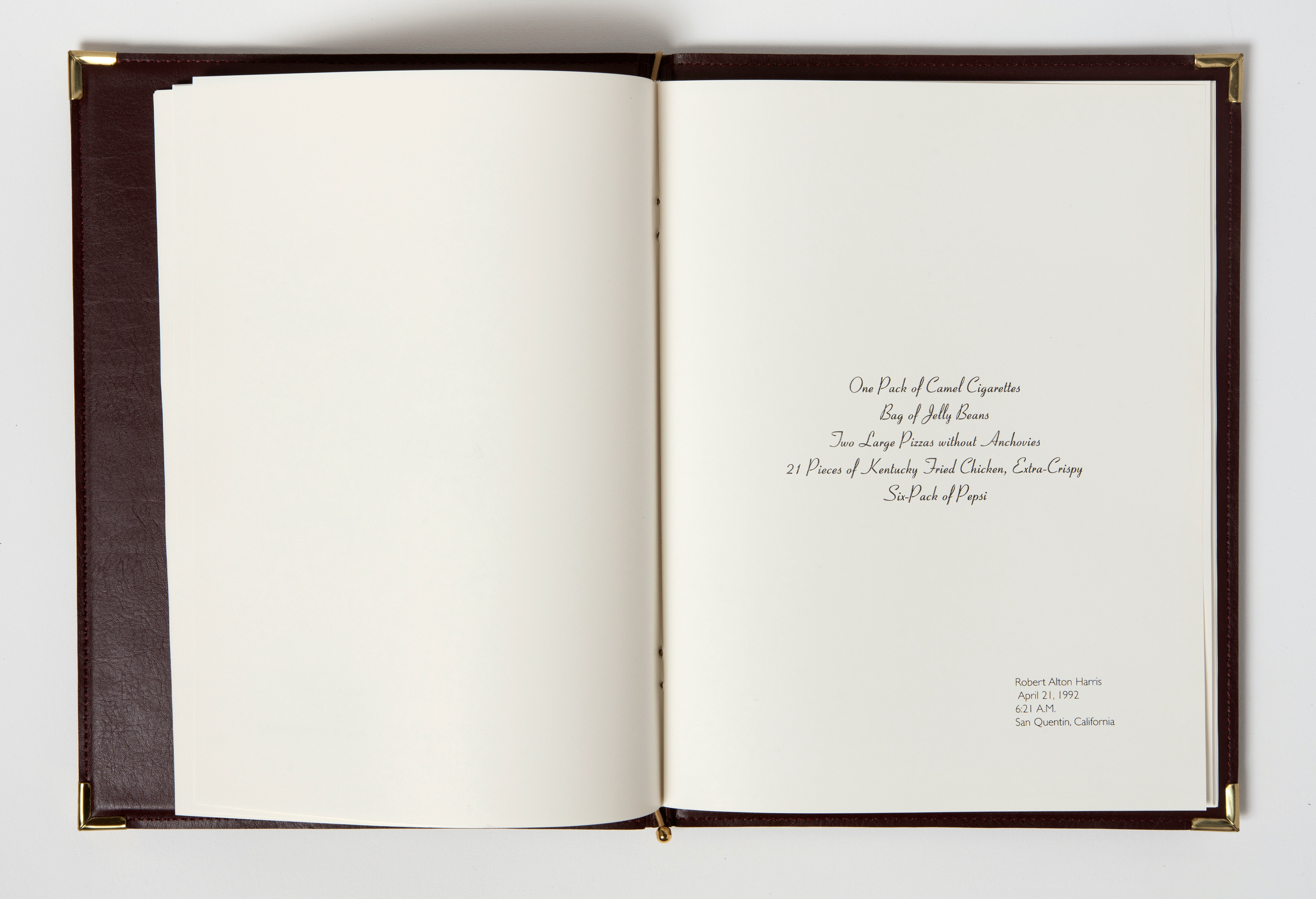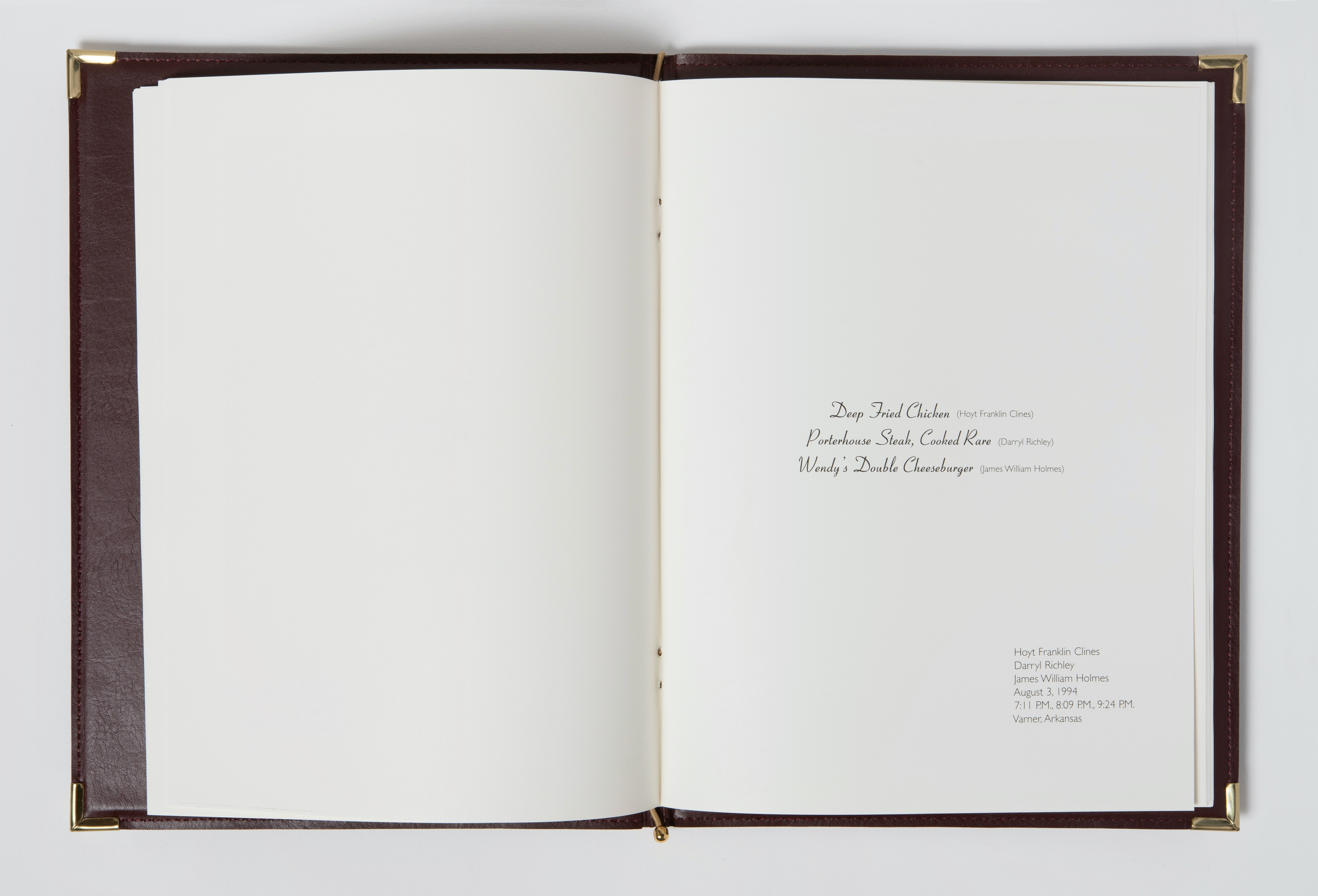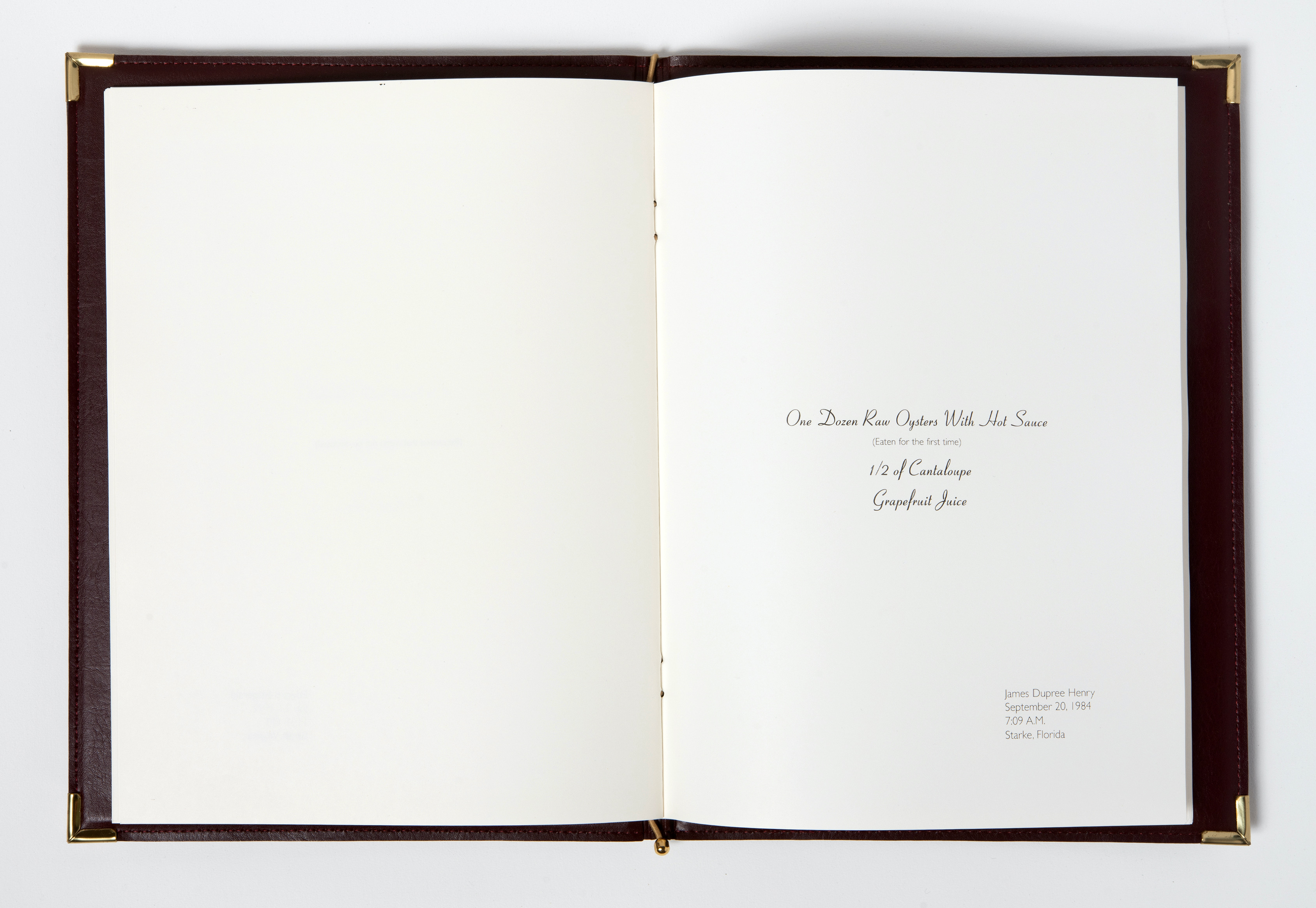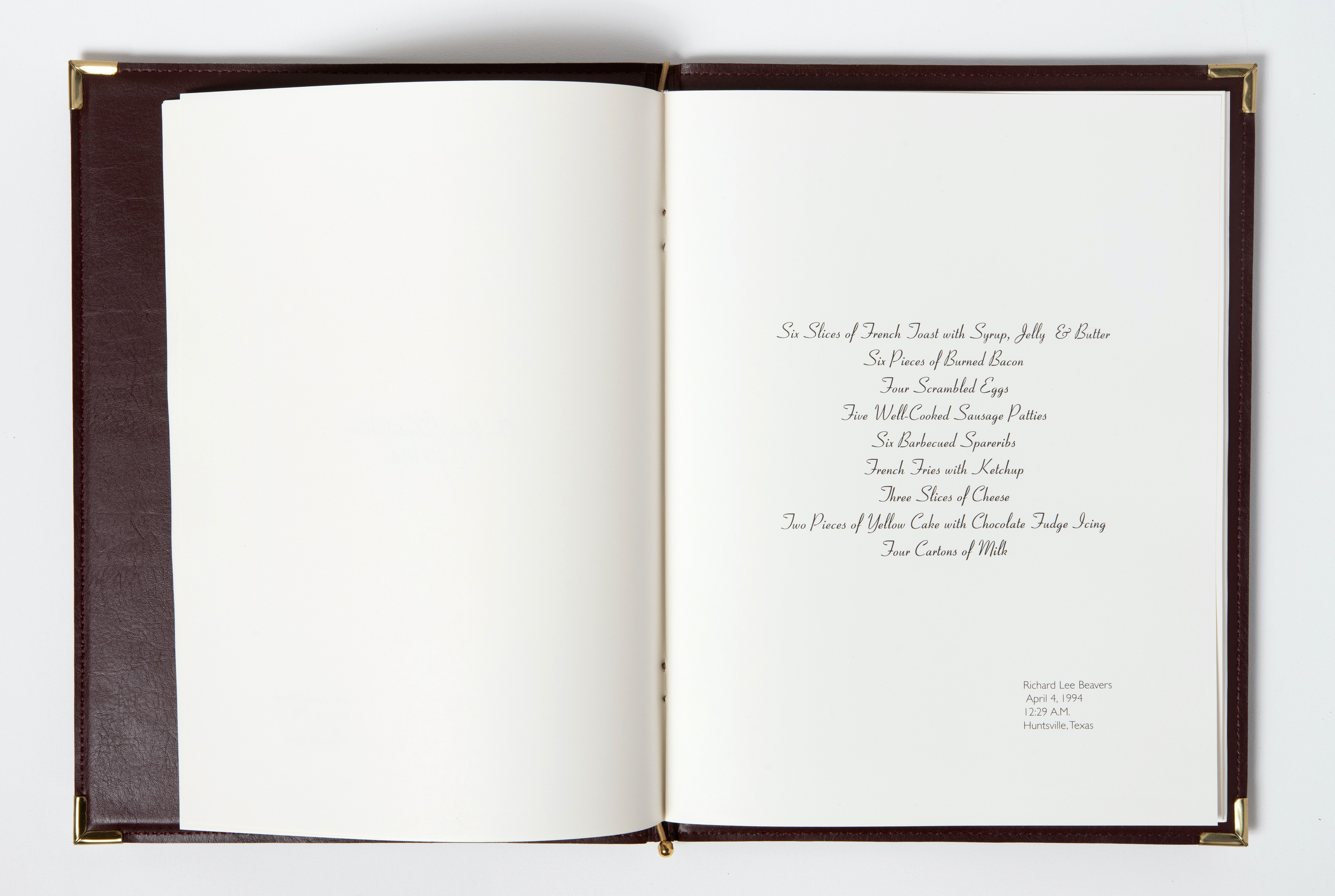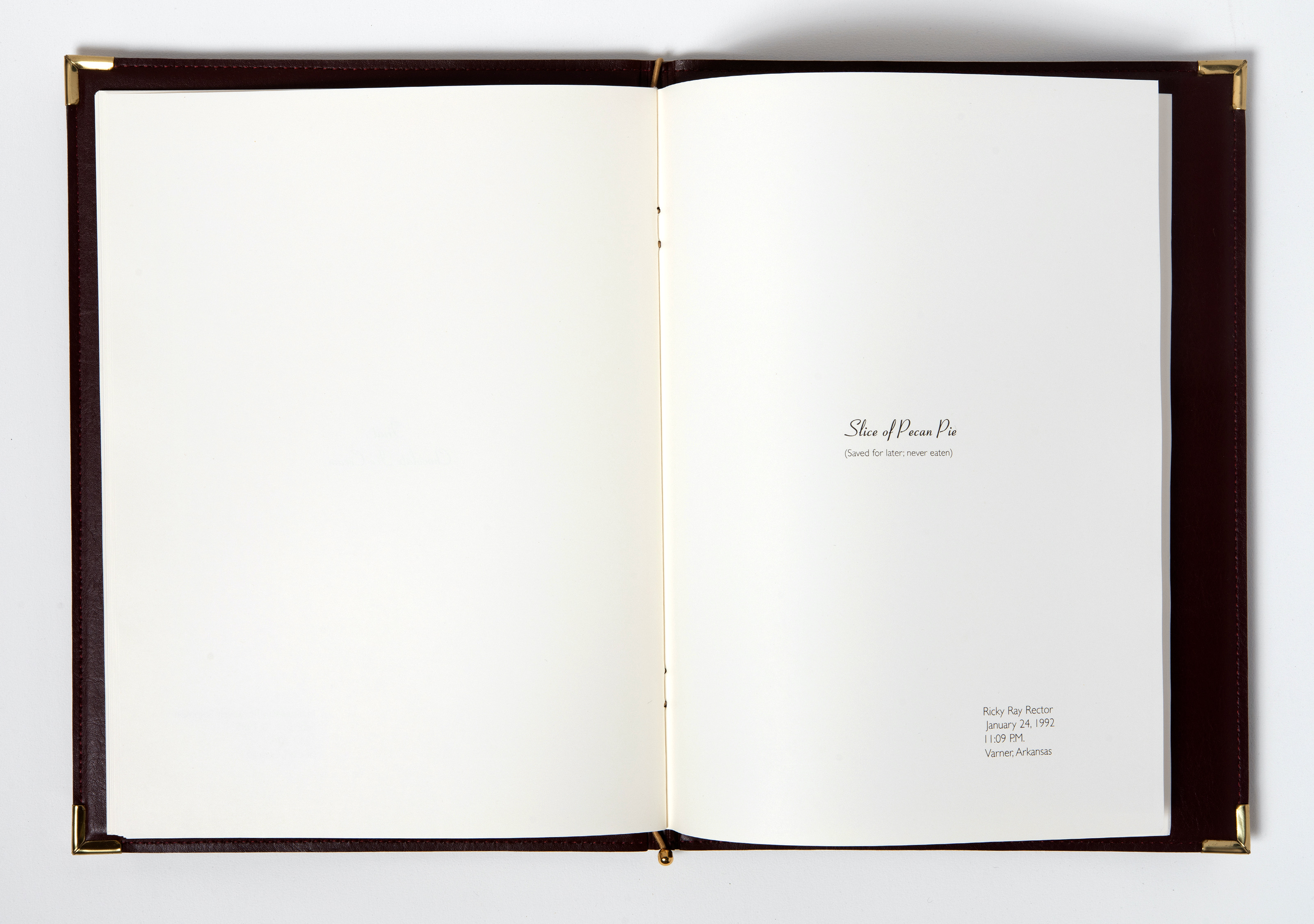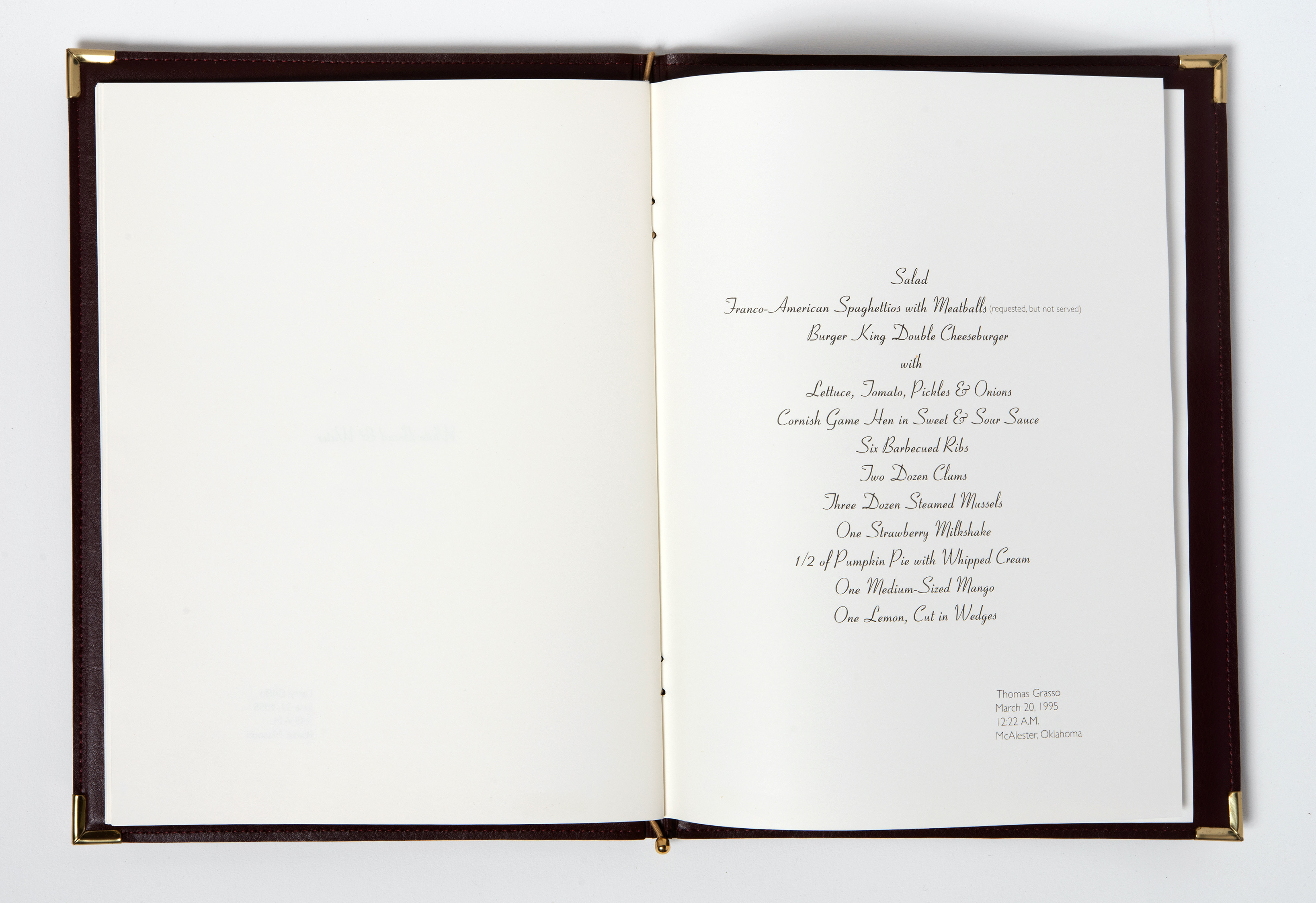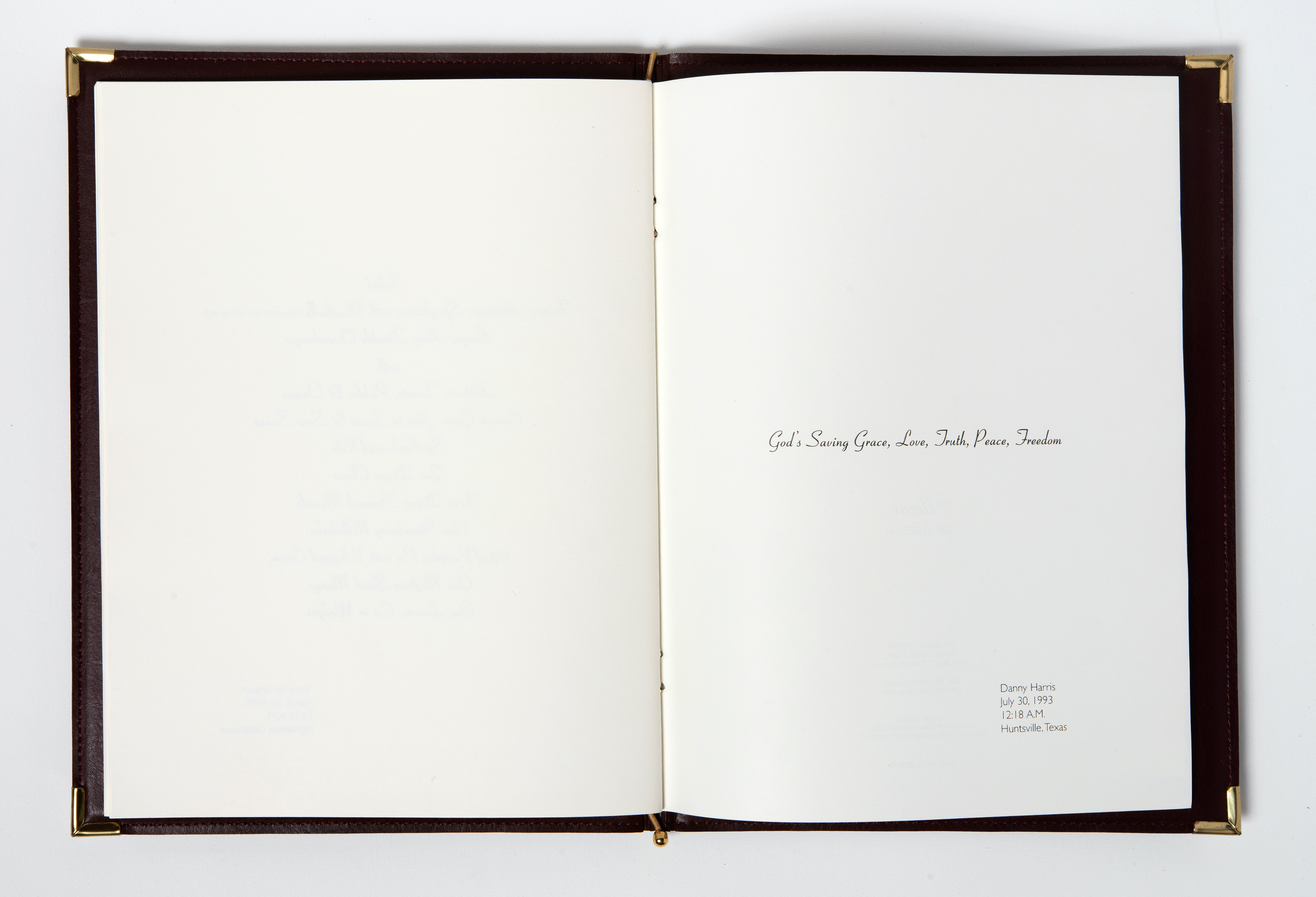The artist's book, The Menu, is a compilation of 34 pages, bound within a burgundy restaurant menu cover. Its gold, foil stamped cover and finely printed pages mimic the design of an expensive restaurant's menu, recounting one person's choice of foods for a particular meal. At the bottom of the page is a person's name, a date and time, as well as the location of the meal. Seems innocent enough. But as viewers turn the pages, they come to realize a common, disturbing element among all the meals. Is it the early morning hours or do the names or locations sound familiar? The Menu is an account of the last meals of people about to be electrocuted, hanged, injected, gassed or shot.
The Menu is especially unsettling because it undermines our expectations related to food, the nature of personal choice, and ideas about the book itself. The Menu recognizes our subtle emotional associations with cultural artifacts like books, and the ways we invest different types of books with meaning, be it personal (diaries) or collective (literary or sacred texts). The Menu format suggests an experience of pleasure and sustenance, where one’s choices affirm his or her own identity and desires. Similarly, each meal recounted here is unique, and reveals the person’s particular relationship with food, but the context surrounding these choices communicates much more.
The presentation of these ritualistic meals within a deluxe bound menu, distances us from the institutionalized proceedings of which they are a part (and emphasizes the over-representation of poor and under-educated people on Death Row). This ambiguity creates a confusion of emotional responses: on one level, the meals are a procession of humorous revelations about the criminal mind (taken together they convey a recurring palate – there are numerous requests for fast food). On another level, these plates articulate a darkness about human beings, and positions each of us as criminal, executioner, or simply the members of a society that puts a person to death shortly after allowing them one last act of individual expression. Surprisingly opposing views on capital punishment have found confirmation in The Menu.
The collection of meals found in The Menu subconsciously prompts us to choose the one that would most likely resemble our own selection or to consider what our own final request would be. This simple act momentarily compels us to identify with the helplessness of the condemned, as it simultaneously links them, guilty or not, with the rest of humanity.
This statement is derived in part from the exhibition essay “The Menu”, by Brian Hannon, Director, Center for Book Arts, NY 1995.
